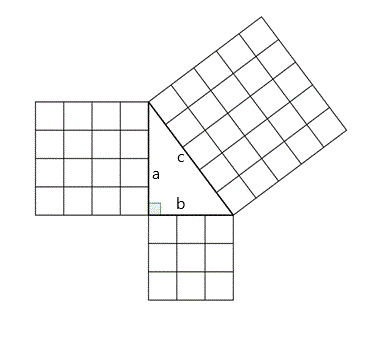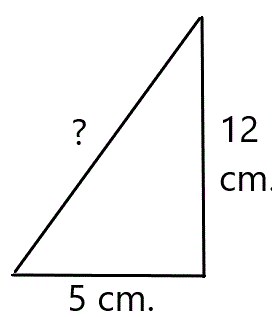
Pythagorean theorem The pythagorean theorem states that,
in a right triangle, if you call the
hypotenuse c and the other 2 sides a and b, then: The pythagorean theorem states that,
in a right triangle, if you call the
hypotenuse c and the other 2 sides a and b, then:And so, to determine c, the hypotenuse, you must take the square root: For example, in a right triangle that has side a = 3 inches and side b = 4 inches, then the hypotenuse (side c) = : c2 = 32 + 42 = 9 + 16 = 25. So c is the square root of 25:  , which is 5. , which is 5.
If you know the hypotenuse and one of the other two sides of a right triangle, you can use the pythagorean theorem to find the missing side by rearranging the pythagorean theorem formula. For example, if you call the missing side "b", then: So, b = √ (c 2 - a 2)
|
